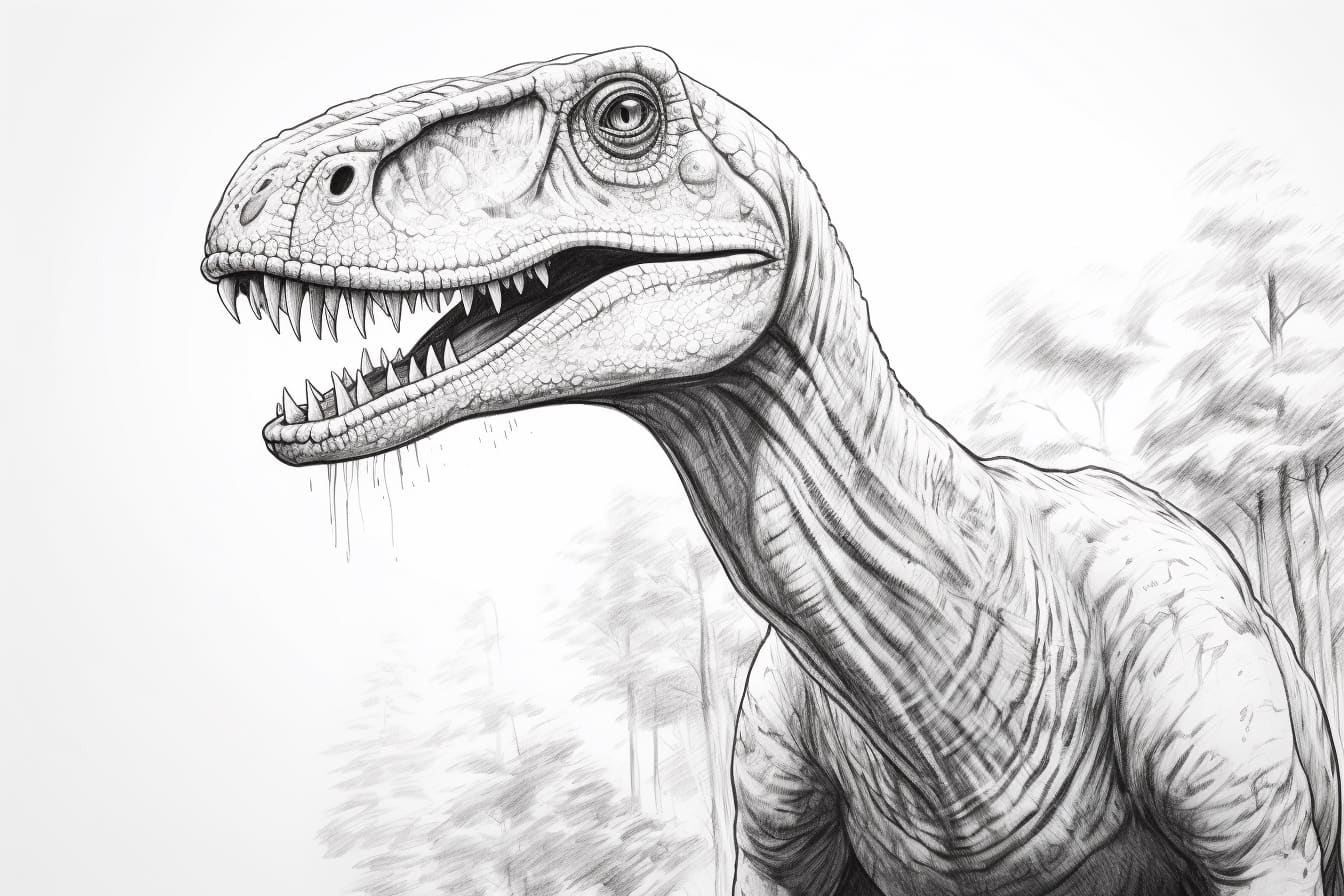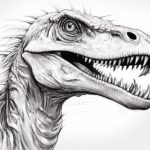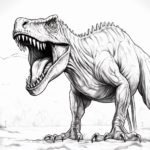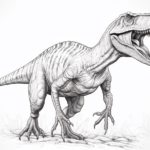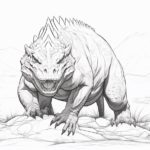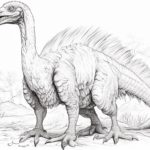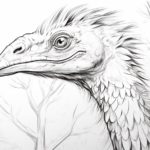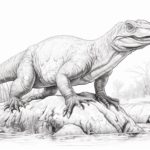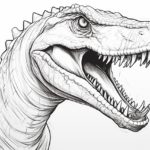Welcome to a fascinating journey into the world of paleoart! Today, we will delve into the prehistoric past and explore the majestic Dromaeosaurus through the art of drawing. Dromaeosaurus, a fearsome predator of the Late Cretaceous period, captivates us with its sharp teeth, clawed hands, and agile frame. By mastering the techniques of depicting this iconic creature on paper, we can bring this ancient predator to life and unlock the mysteries of its existence. Join me as we sharpen our pencils, unleash our creativity, and embark on a thrilling artistic adventure into the realm of Dromaeosaurus drawing.
Materials Required
To draw a Dromaeosaurus, you will need the following materials:
- Pencil: for sketching the initial outline and details of the dinosaur.
- Eraser: for correcting mistakes and refining the sketch.
- Paper: to draw the Dromaeosaurus on.
- Colored pencils or markers: for adding color and details to the drawing.
- Reference images of Dromaeosaurus: to help you accurately depict the dinosaur’s features and anatomy.
- Optional: blending tools such as blending stumps or tortillons for shading and blending colors smoothly.
With these materials, you can create a detailed and accurate drawing of a Dromaeosaurus.
How to Draw a Dromaeosaurus: a Step-by-step Guide
Step 1: Gather Your Materials
Gather all the necessary materials before starting your drawing. You will need a pencil, eraser, drawing paper, and reference images of a Dromaeosaurus.
Step 2: Outline the Basic Shape
Start by lightly sketching the basic shape of the Dromaeosaurus using simple geometric shapes like circles and ovals. Use a larger oval for the body, smaller ovals for the head and limbs, and a curved line for the tail.
Step 3: Add Details to the Head
Refine the shape of the head by adding details such as the eyes, nostrils, mouth, and sharp teeth. Pay attention to the placement of these features to capture the fierce look of the Dromaeosaurus.
Step 4: Sketch the Limbs and Claws
Draw the limbs of the Dromaeosaurus extending from the body, paying attention to the proportions and positioning. Add sharp claws to the feet to emphasize its predatory nature.
Step 5: Define the Body and Tail
Sketch the muscular body of the Dromaeosaurus, paying attention to the contours and shape of the creature. Add texture to the skin to give it a more realistic appearance. Extend the tail with a gentle curve to complete the overall silhouette.
Step 6: Refine Details and Features
Go over your initial sketch and start refining the details of the Dromaeosaurus. Add scales, wrinkles, and other textures to the skin to make it look more lifelike. Pay attention to the proportions and relationships between different body parts.
Step 7: Shade and Add Depth
Use your pencil to add shading to different areas of the drawing to create depth and dimension. Pay attention to light sources and shadows to make the Dromaeosaurus look more three-dimensional.
Step 8: Finalize and Erase Guidelines
Once you are satisfied with the overall look of your Dromaeosaurus drawing, go over the final lines with a darker pencil or pen. Erase any remaining guidelines and unnecessary lines to clean up the drawing.
Step 9: Add Background (Optional)
If desired, you can add a simple background to your drawing to enhance the composition. Consider adding a rocky landscape or foliage to place the Dromaeosaurus in its natural habitat.
Step 10: Sign and Display
Sign your artwork in the corner and consider mounting it or framing it for display. Share your creation with others to showcase your artistic talent and appreciation for prehistoric creatures like the Dromaeosaurus.
Conclusion
In conclusion, drawing a Dromaeosaurus can be a rewarding and fascinating artistic endeavor. By following the step-by-step instructions outlined in this article, artists of all skill levels can create a detailed and realistic representation of this prehistoric creature. Remember to pay attention to anatomical details, study reference images, and practice capturing the essence of the Dromaeosaurus’s unique features. With patience and dedication, anyone can bring this ancient predator to life on paper or canvas. Happy drawing!
Fun Facts About Dromaeosauruses
- Dromaeosauruses were some of the most intelligent dinosaurs, with a relatively large brain size compared to their body size.
- They are known for their distinctive sickle-shaped claws on their second toe, which they likely used for hunting and capturing prey.
- Dromaeosauruses were likely feathered, with evidence suggesting that they had a coat of feathers covering their bodies similar to modern birds.
- Some species of Dromaeosauruses, such as Deinonychus and Velociraptor, are believed to have hunted in packs, working together to take down larger prey.
- Dromaeosauruses were fast and agile predators, capable of reaching high speeds and making quick, precise movements to outmaneuver their prey.
- They had sharp, serrated teeth that were well-suited for slicing through flesh and tearing into their prey.
- Dromaeosauruses had a unique way of holding their prey down while they fed, using their arms and claws to pin it in place.
- Some scientists believe that Dromaeosauruses may have been warm-blooded, similar to modern birds, allowing them to be active and hunt throughout the day.
- The largest known Dromaeosaur, Utahraptor, was estimated to be around 20 feet long and weigh over 1,000 pounds, making it one of the largest predators of its time.
- Dromaeosauruses lived during the Cretaceous period, around 115 to 66 million years ago, and their fossils have been found on almost every continent.
Suggestions for Scenes and Settings for Dromaeosaurus Drawings
- Prehistoric Jungle: Set your Dromaeosaurus in a lush, dense jungle filled with ancient trees, vines, and ferns. Add other prehistoric creatures like sauropods or pterosaurs in the background to create a dynamic and vibrant scene.
- Desert Oasis: Place your Dromaeosaurus near a shimmering oasis in the desert, surrounded by sand dunes and palm trees. You can add a herd of grazing dinosaurs or a distant volcanic eruption to add drama to the composition.
- Ice Age Tundra: Imagine a snowy landscape with your Dromaeosaurus hunting a woolly mammoth or a group of saber-toothed cats. Include icy cliffs, frozen lakes, and a colorful sky at dusk to create a striking contrast in your drawing.
- Coastal Cliffs: Position your Dromaeosaurus on rugged coastal cliffs overlooking a turbulent sea. Include crashing waves, seabirds in flight, and a storm brewing on the horizon to capture the raw power and beauty of the scene.
- Volcanic Island: Place your Dromaeosaurus on a tropical island with an active volcano in the background. Show lush vegetation, exotic flowers, and steaming geysers to create a tropical paradise with a dangerous edge.
- Cretaceous Forest: Transport your Dromaeosaurus to a dense forest filled with towering conifers, ferns, and moss-covered rocks. Add shafts of sunlight filtering through the canopy and small dinosaurs like compsognathus or microraptor darting among the trees for a sense of scale.
- Mountain Peak: Picture your Dromaeosaurus perched on a rocky mountain peak, surveying the vast landscape below. Include swirling clouds, distant mountain ranges, and a golden sunset to evoke a sense of majesty and isolation in your drawing.
- Underground Cavern: Place your Dromaeosaurus in a mysterious underground cavern filled with glowing crystals, stalactites, and eerie shadows. Add bats, insects, or other cave-dwelling creatures to enhance the atmosphere of mystery and danger.
Remember to consider lighting, composition, and storytelling elements to make your drawings of Dromaeosaurus truly captivating and engaging for viewers. Experiment with different perspectives, color schemes, and textures to bring these imaginative scenes to life on paper or digitally.

